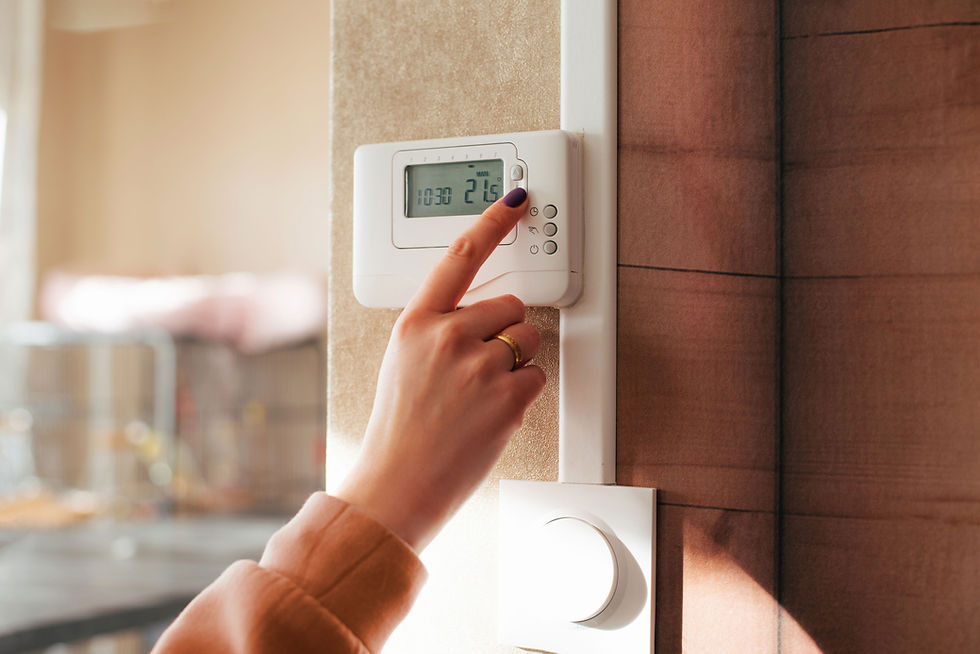What are the Next Generation HVAC Solutions for City Living?
- Oct 25, 2024
- 4 min read
Urban living introduces specific challenges for climate control and air quality, making effective HVAC solutions essential. With cities becoming more crowded and energy costs climbing, traditional HVAC systems struggle to keep up. Fortunately, innovative solutions are emerging to meet the unique needs of city residents. In this post, we will examine next-generation HVAC systems that promise efficiency, sustainability, and ease of use for modern urban homes.
The Importance of HVAC in Urban Environments
As cities continue to expand, effective heating, ventilation, and air conditioning has become vital. For instance, nearly 86% of urban households report concerns about rising energy costs. With urban living often characterized by limited space, HVAC systems must perform well without monopolizing valuable living areas or resources.
Moreover, energy efficiency is crucial for managing high utility bills. A study shows that energy-efficient systems can reduce consumption by up to 35%, allowing residents to save substantial amounts on monthly expenses. In urban settings, where air pollution levels can impact indoor air quality, it is essential for HVAC systems to effectively filter contaminants. Next-generation systems are designed not only for heating and cooling but also for enhancing the overall air quality of urban dwellers' homes.
Smart HVAC Technology: The Future is Now
One exciting development in HVAC technology is the growing integration of smart systems. These systems utilize IoT (Internet of Things) capabilities, enabling homeowners to control their heating and cooling remotely through smartphones or voice-activated devices.
For example, smart HVAC can adapt to an occupant’s routine. If someone usually arrives home at 6 PM, the system can start heating or cooling the space 15 minutes before arrival, maximizing comfort while minimizing energy waste. A study found that smart HVAC systems can reduce energy consumption by an average of 10% just by optimizing usage based on user behavior.
Additionally, smart filters can send notifications when it's time for a replacement, ensuring high indoor air quality. Energy monitoring features help residents track usage patterns, leading to better management and potential cost savings.
Ductless Mini-Split Systems: Space and Energy Savers
Ductless mini-split systems are an excellent solution for city dwellers facing space constraints. These systems consist of an outdoor compressor and one or more indoor air-handling units that can be wall-mounted. This setup eliminates the need for extensive ductwork, making it easier to install in smaller apartments or homes.
These mini-split systems provide both heating and cooling. They also boast higher energy efficiency ratings than traditional systems, with many models exceeding 25 SEER (Seasonal Energy Efficiency Ratio). Since these systems allow for independent temperature control in different zones, users only heat or cool the rooms they occupy, reducing overall energy consumption and saving as much as 30% on utility bills.
Energy Recovery Ventilation (ERV): A Breath of Fresh Air
Urban life can compromise indoor air quality due to pollution. Energy Recovery Ventilation (ERV) systems help tackle this challenge by exchanging stale indoor air with fresh outdoor air while minimizing energy loss.
ERV systems work by transferring heat and moisture between incoming and outgoing air streams. By retaining energy from the exhaust air, these systems reduce the load on HVAC units. For instance, homes equipped with an ERV system can save around 25% on heating costs during the winter months.
Many ERV systems also contain filters to remove pollutants and allergens, making them a smart choice for urban residents aiming to improve air quality without significantly increasing energy expenses.
Hybrid Heating Systems: The Best of Both Worlds
Hybrid heating systems are gaining traction among city residents. These systems usually combine traditional fossil fuel heating with electric heat pumps, allowing homeowners to switch seamlessly between the two based on current temperatures and energy needs.
During milder weather, the electric heat pump provides efficient heating. When outdoor temperatures drop, the system automatically transitions to gas or another fossil fuel for reliable warmth. This flexibility can lead to energy bill savings of up to 20%, depending on usage patterns.
By optimizing energy sources based on availability and cost, hybrid systems not only enhance efficiency but also lower carbon footprints. This feature is particularly appealing to urban residents who might experience unpredictable weather conditions.
Sustainable Refrigerants: A Greener Future
The impact of HVAC systems extends to their refrigerants, which can significantly affect the environment. Next-generation systems increasingly utilize sustainable refrigerants with a low global warming potential (GWP).
Leading manufacturers are designing systems that employ natural refrigerants, like ammonia, carbon dioxide, and hydrocarbons. These alternatives have a minimal environmental footprint and deliver efficient performance across various temperatures.
As regulations become stricter around high-GWP refrigerants, urban homeowners will find it necessary to adopt these sustainable solutions. Making the transition not only helps achieve climate goals but also ensures continuous, effective HVAC performance.
Embracing the Future of HVAC
The outlook for HVAC solutions in urban living is bright. Innovations around efficiency and sustainability are shaping the systems tailored for city dwellers. From smart technology to ductless designs and eco-friendly refrigerants, these systems address the unique challenges faced by those living in cities.
By integrating these advanced solutions, urban residents can improve their comfort, enhance their air quality, and actively support sustainability initiatives.
As you explore your heating and cooling options, consider how these next-generation HVAC developments can benefit your living environment while aligning with the shift towards sustainable urban lifestyles. Enjoy the comfort you deserve with innovative HVAC solutions designed for the city.



Comments